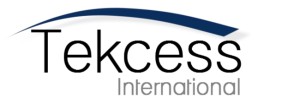Have you experienced any of these with your newest product?
- The release is perpetually “next month.”
- Your target accounts aren’t interested.
- You keep losing to the competition.
- You’re barely breaking even on each sale.
Capital equipment product development programs can cost millions of dollars and stretch over several years. Companies usually launch these programs with a solid business case and optimism that engineering can overcome the technical challenges.
However, sometimes things change so much during a program that it no longer makes sense to continue the program. When this is the case, the earlier you recognize it, the better. You can save millions and reallocate resources. To make sure that you don’t keep investing in a program that no longer holds the prospect of an adequate return:
- Add “Should we?” to your gate reviews
- Then ask the four “Should we?” questions
Add “Should we?” to Gate Reviews
Capital equipment companies typically run product development programs within a phase-gate process. The process requires the development team to review the program with management at predetermined milestones or gates. Management ensures that the team has completed the deliverables necessary to proceed to the next phase at these gate reviews. Management questions in a gate review often include things like:
- When will the design be complete?
- Is the supply chain ready?
- Is the alpha system build on schedule?
- Do we have a plan to train service?
Management asks questions like the above to determine if a program can pass the gate and move on to the next phase. That’s certainly important, but being capable should only be half of the requirement for gate passage. The other half is a “yes” conclusion to the question, “Should we continue to the next phase of the program?”
Your gate review must include the four critical “Should we?” questions.
The Four “Should we?” Questions
If the team fails to make a case for a “yes” to any of these four questions, you should consider killing the program or at least put it on hold,
1. Will it Work?
Somewhere between your program’s design and alpha test phase, all inventions on the path to success should be behind you. If not, the program is a candidate for being reduced to a technology development effort until the team can demonstrate a viable technical path.
2. Is it real? 1. Will it Work?
When you launched the program, it had an assumption about the market need. At each gate review, you need to revalidate that assumption. You need to refresh all of the voice-of-the-customer work that went into developing the original business case at each gate review.
3. Can we win?
It’s very likely that starting assumptions about what your and the competitions’ capability will be at the time of product introduction have changed. Refresh your competitive analysis at each gate review. Then verify that your value proposition and product positioning are still valid.
4. Is it worth it?
You kicked off the program with an expectation for revenue and profit in return for your investment. Every line in your original ROI calculation is vulnerable to change in the course of a product development program. Make sure your revenue, pricing, costs, and timing forecasts reflect the current reality at each gate review.
Every time you initiate a new product development program, you’re betting that it will result in commercial success. But in a world where product development can take years and the environment is constantly changing, your hit rate will not be 100%. Killing a product development program that no longer makes sense is not a failure. Continuing to invest in one you should have stopped is.

